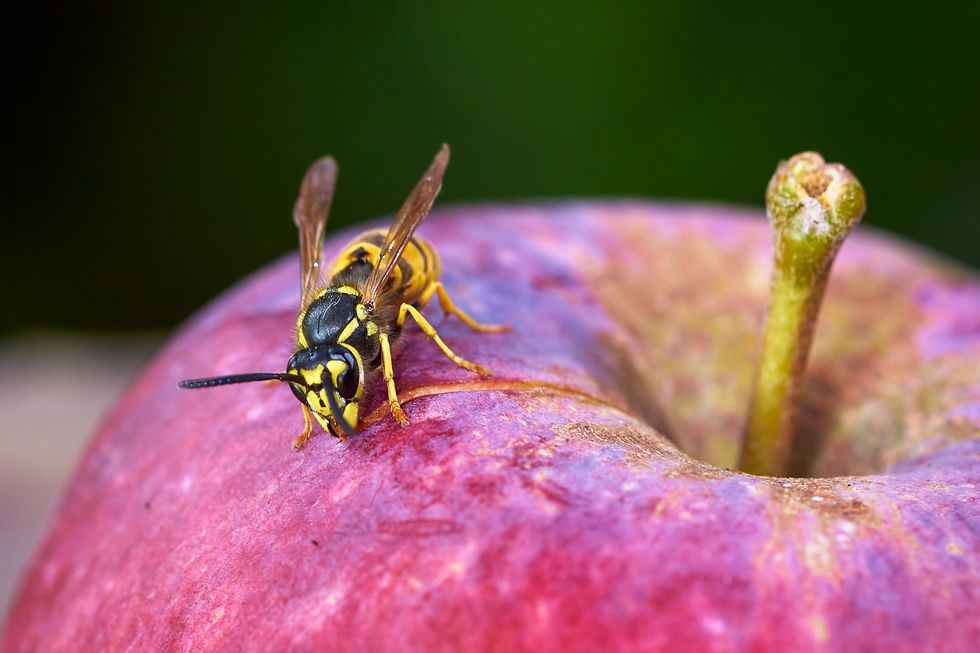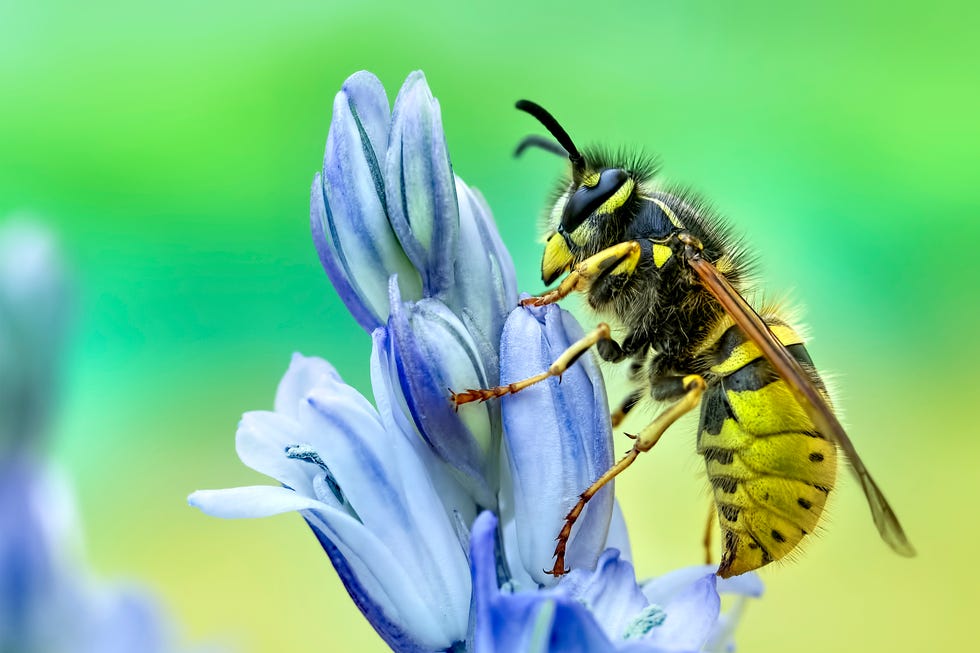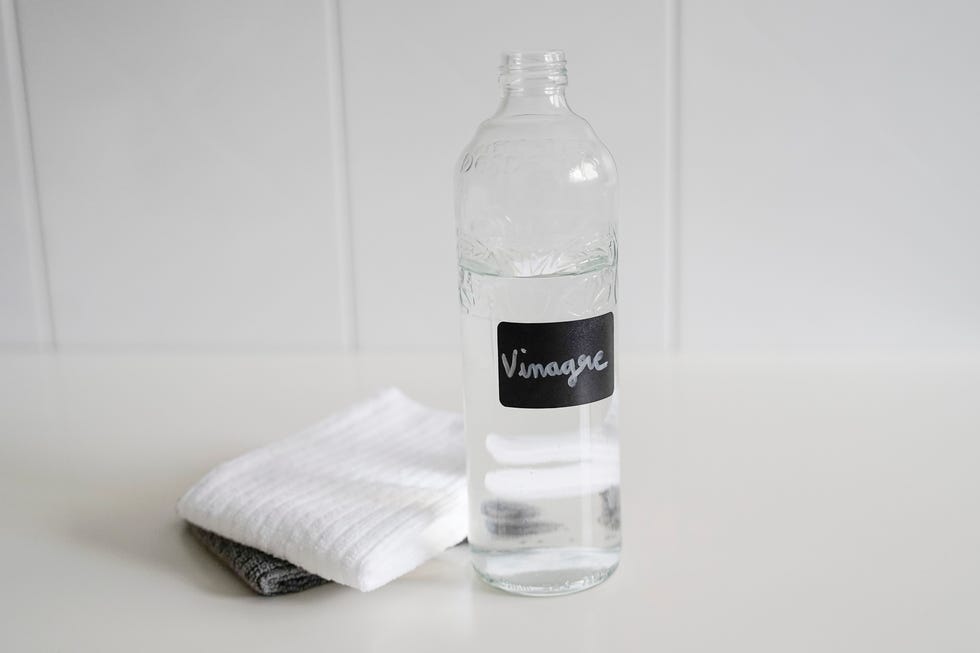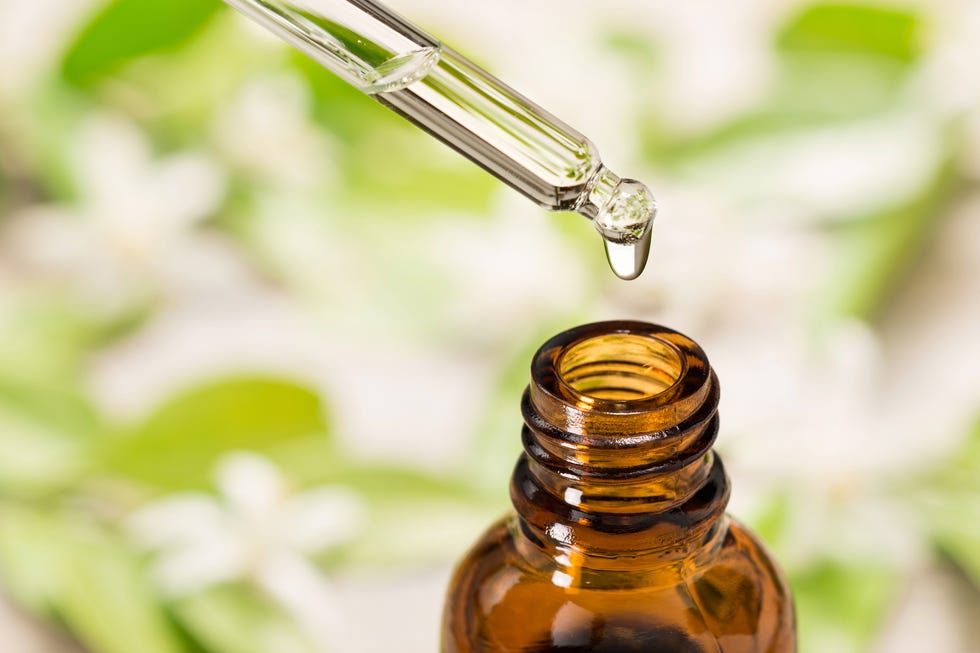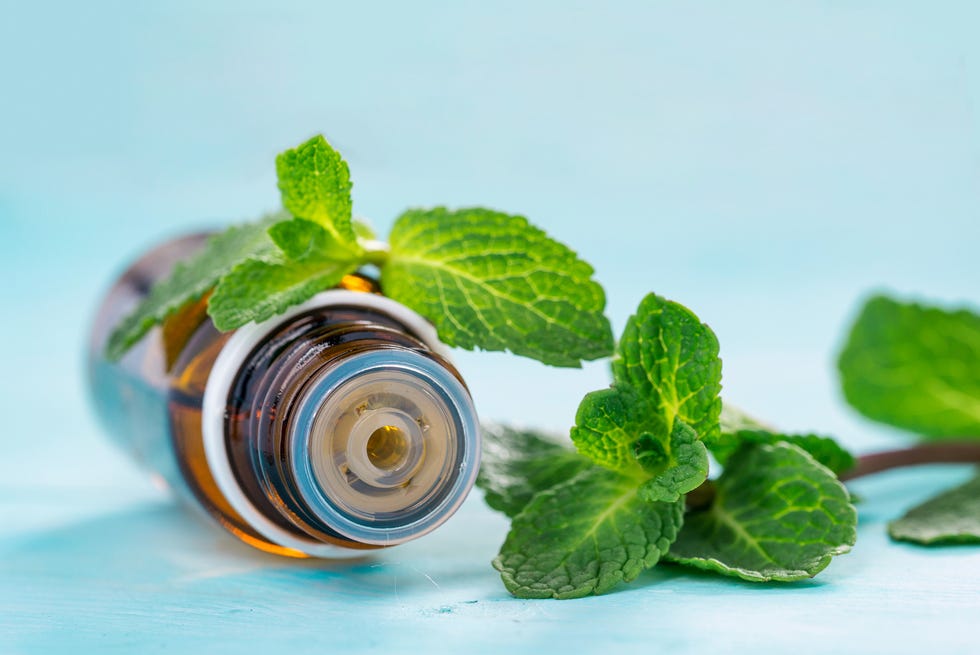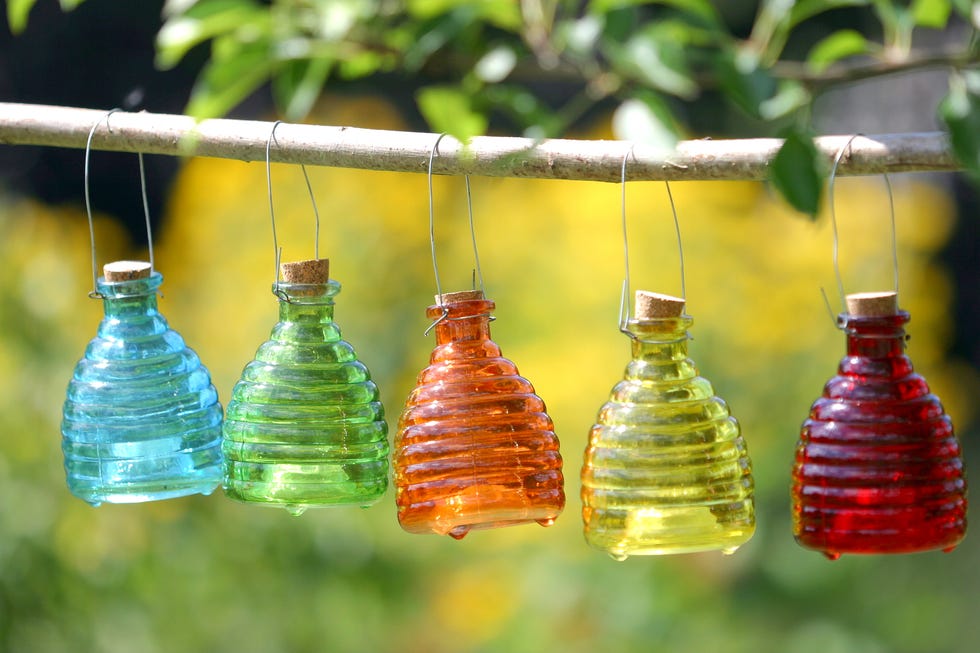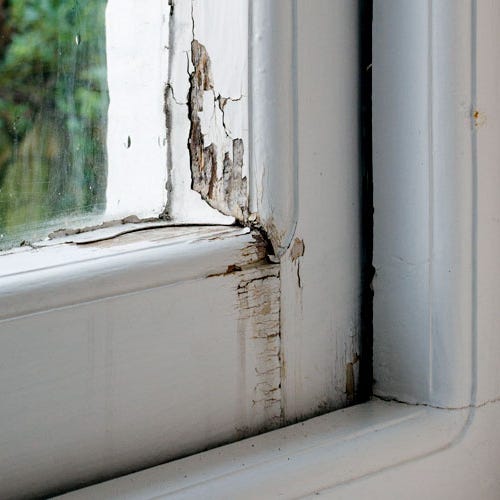With spring comes warmer weather, but unfortunately the season’s arrival might also mean an abundance of one specific type of pest — wasps. These aggressive insects come out in the spring and linger until winter. Their overbearing presence in your house or garden may have you searching desperately for a solution. To ease your frustration, browse our guide on how to get rid of wasps that you may find flocking around your flowers or any other part of your home.
Below, you’ll find natural home remedies to get rid of wasps in an instant. Effective ideas include making liquid solutions with essential oils and vinegar to spray onto plants or lure wasps into traps. If you’re growing fruits and vegetables, be sure to keep the area clean and free of scraps at all times to help prevent wasps (they’re are also attracted to sweet scents and bright-colored flowers that you likely have in your summer garden).
You should also conceal cracks and crevices, or try planting decoy plants (spearmint and eucalyptus are just a few examples) in areas your family is less likely to be around. Since wasps are typically more active during the day as they search for food, and more dormant at night, be on the lookout to prevent walking close to their nest and getting stung. According to the University of Minnesota Extension, wasps can be found inside buildings, on trees and in places you least expect, like in the attic, walls or anywhere dark and warm for shelter. The pests tend to stay clear of attacking when people aren’t near their nests, but if you find one close to where your family is most active, it’s best to eliminate the risk of stings.
“Stinging insects send more than half a million people to the emergency room every year,” says Dr. Jim Fredericks, Ph.D., chief entomologist for the National Pest Management Association (NPMA). He strongly recommends calling a licensed pest control professional for nest removal, especially if you want to be safe.
Read below for more details on how you can get rid of wasps hiding nearby. We even share the different types of wasps, so you can pinpoint the more aggressive colonies, including yellow jackets and bald-faced hornets.
Different Types of Wasps
According to Dr. Fredericks, you’ll find more than 4,000 different types of wasps in the U.S. Common species include mud daubers, yellow jackets and paper wasps. Unlike bees, with their full and hairy bodies, wasps are slimmer and have a shinier appearance. Plus, bees feed their larvae pollen, while wasps nourish theirs with insects, making them great for controlling pests and suitable for protection crops, according to National Geographic.
Mud Daubers
These wasp types are less aggressive than the others. Pinpoint them by their long and slender bodies and black wings. They’re typically brown or black in color, though some may have yellow stripes. Although they usually build nests on buildings and homes, they rarely sting.
Paper Wasps
Similar to mud daubers, paper wasps have a brownish color, although some may be found with red stripes. Their paper-like nests are shaped like umbrellas and can be found on tree branches, porch ceilings, door frames and windows.
Yellowjackets
With their yellow bodies and black markings, yellow jackets are one of the most common and aggressive wasp types. They’re incredibly territorial and have a habit of repeatedly stinging when threatened.
Bald-Faced Hornets
Another aggressive type, the bald-faced hornets are large, mostly black, and have white or ivory markings. They love living in large colonies, making them one of the social insects. Their round and papery nests are usually found in trees and bushes, so be wary in your garden.
European Hornets
While not the aggressive type, unless they feel threatened, European hornets are brown with yellow stripes. Their nests are hidden in various places like barns, attics and even abandoned bee hives, with the average nest containing 200 to 400 workers, according to the University of Maryland Extension.
How to Get Rid of Wasps in Your Home and Garden
Vinegar
Vinegar is a versatile substance used for cooking, cleaning, baking and even weed control. And believe it or not, you can even use it to kill wasps. In fact, it attracts them. According to a study published in the Journal of Pest Management Science, acetic acid, the ingredient of vinegar that gives it its unique odor, mixed with water is an effective solution that lures wasps and other pests. Since vinegar is made of water and 4% acetic acid, you can create an effective solution to charm wasps into flying to your trap. Simply mix apple cider vinegar, sugar and water together in a bowl. Stir thoroughly and leave your trap near their nest so they’ll drown.
Clove-Geranium-Lemongrass Oil Blend
Research published in the Journal of Pest Management Science found that a combination of clove, geranium and lemongrass essential oil successfully repelled wasps. Mix several drops of each oil with water and dish soap in a spray bottle and coat areas on the outside of your home where wasps like to build nests: under eaves, porch roofs and other ledges and crevices. You can even spray the solution on your plants, as the mixture isn’t harmful to them.
Since fully covering all of those areas with essential oils would be impractical, target spots where you’ve found old nests in the past, as paper wasps tend to build new nests in the same locations, according to Clemson University Cooperative Extension Service.
Soap and Water
According to Chris Walker, an eco-friendly wasp removal expert in Southeastern Pennsylvania, you can tackle small hanging nests with a mixture of two tablespoons of dish soap in a spray bottle filled with water. “The soap clogs their breathing pores (called spiracles) and they die almost instantly,” Walker says.
Peppermint Oil
Peppermint oil may also be effective at repelling wasps, according to the same study from the Journal of Pest Management Science. You can try applying it as described above, by spraying it on your plants and in common areas where they congregate, or you can purchase EcoSmart Organic Wasp and Hornet Killer, which is mint-oil-based, to target established nests.
Wasp Traps
Wasp traps work by luring the insects inside a container with some tempting treat like sugar water and then preventing their escape. You can make one yourself in about five minutes by sawing the top off a two-liter bottle and inverting it inside the bottom, or cutting a small hole in the top. Hang your trap on tree branches where the wasps like to congregate.
If the DIY route isn’t for you, you can also purchase a more heavy-duty trap online such as this highly-rated one sold on Amazon. However, Walker notes that traps probably won’t fully solve your problem because you might end up capturing wasps passing through your yard, rather than just ones building a problem nest. If using a trap, your best bet is to try to locate the nest and place the trap close to its entrance.
Patch Up Cracks
If you want to keep wasps from invading your house, preventative measures are key, says Walker. He recommends sealing up tiny cracks — like those around the edges of siding and where power lines enter the house — and patching up holes in window screens. The best time to do this is in late fall after most worker wasps have died off or in early spring before nests become active. “Use a combination of caulk or expandable foam sealant, like Great Stuff, to plug cracks and holes,” says Dan DiClerico, Director of the Home Improvement & Outdoor Lab at the Good Housekeeping Institute. “Besides keeping out wasps and other pests, this will make your home more energy efficient.”
However, if you do discover wasps inside your house, don’t try to seal the nest inside the wall, thinking they’ll just die off. “They’ll find their way out through vents or even chew through drywall,” says Walker.
Keep Food and Trash Covered
According to the University of New Hampshire Cooperative Extension, wasp problems are usually worse in backyards that have lots of food sources in the form of exposed garbage, recycling bins and composting food matter. Make sure to tightly seal the lids to your garbage bins. “Bins with a secure locking lid are ideal, but a pair of bungee cords should also do the trick,” says DiClerico. You might also consider composting indoors if you find your compost pile close to the garden is causing problems.
“As invaders of backyard barbecues, stinging insects are attracted to sweets and proteins, and thus people,” says Dr. Fredericks. He suggests “pour[ing] canned drinks into cups when enjoying a cold beverage outdoors. Wasps are known to climb into cans and sting when an unsuspecting person takes a sip.” Generally, keep sugary beverages and all food out of reach whenever possible.
How to Get Rid of Wasp Nests
A professional pest controller is recommended when removing wasp nests. However, if you want to remove the nest on your own, follow these steps:
- Spray a store-bought wasp killer, like Spectracide, onto the nest at least 24 hours before removal. Wear gloves and white attire, as black and other dark tones are perceived as threats.
- Check for activity in the nest. If you still see movement, spray again and wait to make sure the wasps are dead.
- Cover the nest with a garbage bag.
- Gently pull the nest from where it’s hidden and seal the bag once inside.
- Throw the bag away and seal it with a tight-fitting lid.
Assistant Editor
Mariah Thomas (she/her) is an assistant editor for Good Housekeeping, where she covers home and lifestyle content. Mariah has more than four years of editorial experience, having written for TLC, Apartment Therapy, Women’s Health and Avocado Magazine. She received her master’s degree in journalism at the Craig Newmark Graduate School of Journalism and published her first book, Heart and Soul: Poems of Thoughts and Emotions, in 2019. She’s also the founder of RTF Community a platform for creatives of color to connect, learn and showcase their work.

